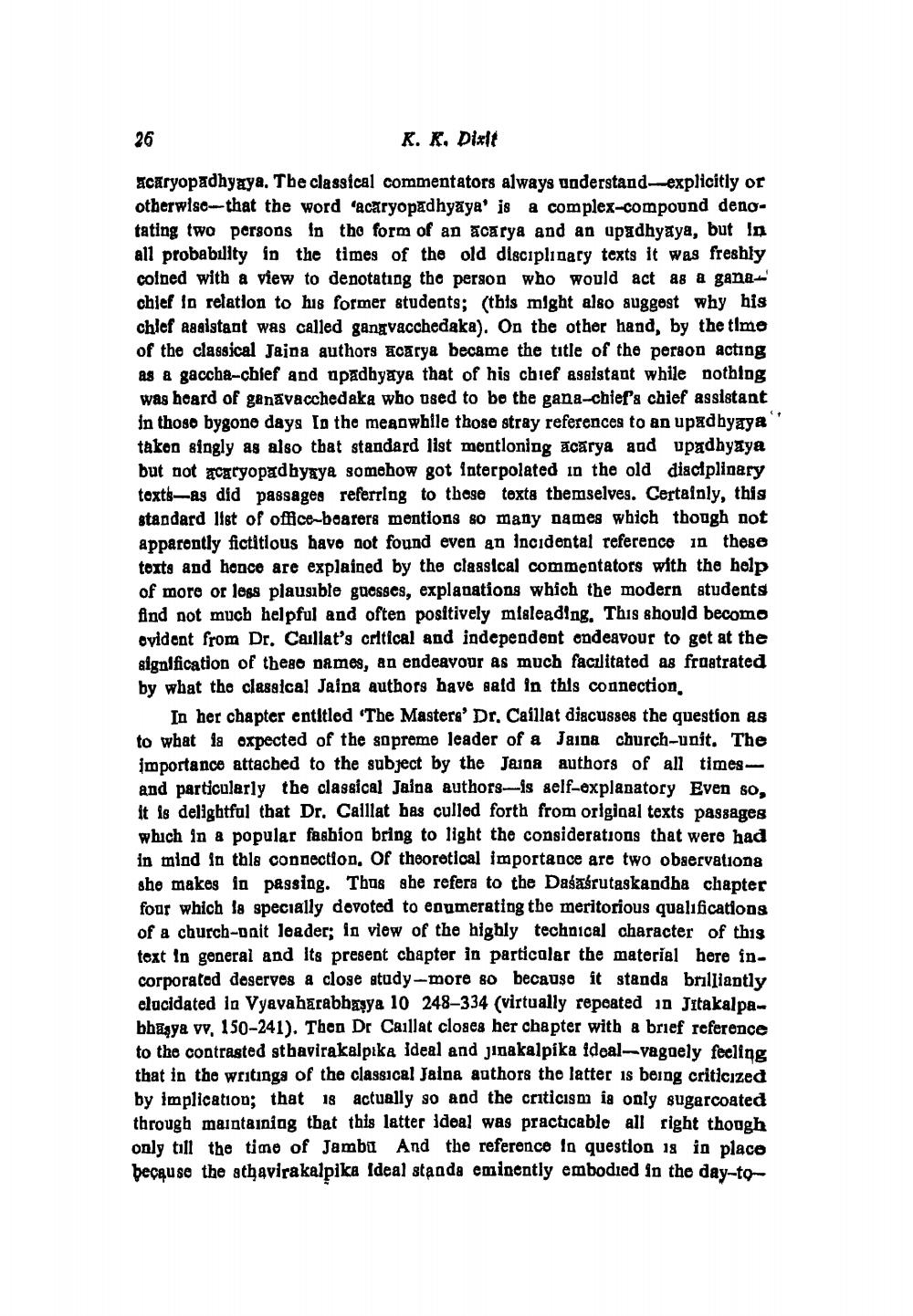________________
K. K. Dixit
acaryopadhyaya. The classical commentators always understand-explicitly or otherwise that the word 'acaryopadhyaya' is a complex-compound denotating two persons in the form of an acarya and an upadhyaya, but in all probability in the times of the old disciplinary texts it was freshly coined with a view to denotating the person who would act as a gana chief in relation to his former students; (this might also suggest why his chief assistant was called gangvacchedaka). On the other hand, by the time of the classical Jaina authors aсarya became the title of the person acting as a gaccha-chief and upadhyaya that of his chief assistant while nothing was heard of ganavacchedaka who used to be the gana-chief's chief assistant in those bygone days In the meanwhile those stray references to an upadhyaya taken singly as also that standard list mentloning acarya and upadhyaya but not acaryopadhyaya somehow got interpolated in the old disciplinary texts-as did passages referring to these texta themselves. Certainly, this standard list of office-bearers mentions so many names which though not apparently fictitious have not found even an incidental reference in these texts and hence are explained by the classical commentators with the help of more or less plausible guesses, explanations which the modern students find not much helpful and often positively misleading. This should become evident from Dr. Caillat's critical and independent endeavour to get at the signification of these names, an endeavour as much facilitated as frustrated by what the classical Jaina authors have said in this connection.
26
In her chapter entitled 'The Masters' Dr. Caillat discusses the question as to what is expected of the supreme leader of a Jaina church-unit. The importance attached to the subject by the Jaina authors of all timesand particularly the classical Jaina authors-is self-explanatory Even so, it is delightful that Dr. Caillat has culled forth from original texts passages which in a popular fashion bring to light the considerations that were had in mind in this connection. Of theoretical importance are two observationa she makes in passing. Thus she refera to the Daśaśrutaskandha chapter four which la specially devoted to enumerating the meritorious qualifications of a church-unit leader; in view of the highly technical character of this text in general and its present chapter in particular the material here incorporated deserves a close study-more so because it stands brilliantly elucidated in Vyavaharabhaṣya 10 248-334 (virtually repeated in Jitakalpabhagya vv, 150-241). Then Dr Caillat closes her chapter with a brief reference to the contrasted sthavirakalpika ideal and jinakalpika ideal-vaguely feeling that in the writings of the classical Jaina authors the latter is being criticized by implication; that is actually so and the criticism ia only sugarcoated through maintaining that this latter ideal was practicable all right though only till the time of Jambu And the reference in question 18 in place because the athavirakalpika Ideal standa eminently embodied in the day-to




